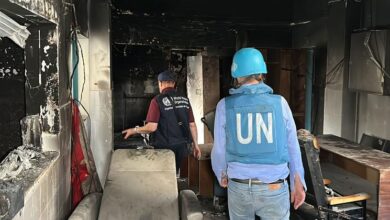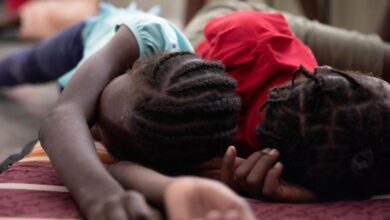Civilians and peacekeepers are in danger amid the escalating Lebanese conflict

According to reports, increased Israeli airstrikes on September 23 forced nearly 120,000 people to flee their homes within a week. UNHCR.
As of October 20, that number had skyrocketed to 809,000 displaced people in Lebanon. More than 425,000 more people – of whom about 70% are Syrian refugees and about 30% Lebanese – are estimated to have crossed the border from Lebanon to Syria as of October 21.
Latest reports indicate that the rate of new arrivals crossing the Syrian border remains stable but has decreased compared to the early stages of the wave.
“In addition to the tragic loss of life and massive displacement, Lebanese and Syrians are experiencing fundamental family and community instability, exacerbating many previous crises.,” UNHCR said in a statement Urgent update.
It highlights the need to significantly increase sustained international support for both Lebanon and Syria to respond to challenges and deliver urgent, life-saving aid.
Expanding ‘evacuation’ order
About A quarter of Lebanon’s total territory remains under Israeli military evacuation orderswith the new relocation notice designating a large area within the city of Tire in southern Lebanon, within the area of operations of the United Nations Interim Force in Lebanon (UNIT).
Tire was subsequently subjected to several air raids.
Believed to have been founded by the Phoenicians in 2750 BC, the city is considered “directly linked to several periods in human history”. according to to the United Nations Educational, Scientific and Cultural Organization (UNESCO).

Bomb damage following air strikes on the southern suburbs of Beirut.
Fighting continued uninterrupted
Meanwhile, hostilities continue between the Israel Defense Forces (IDF) and Hezbollah across the divided “Green Line” in southern Lebanon.
UN Deputy Spokesperson Farhan Haq said on Tuesday UNIFIL detected 1,028 trajectories of cross-border projectiles, the majority of which originated south of the Green Line, targeting areas including Al Qawzah, Aytarun , Markaba, Tallusah, Ett Taibe, El Khiam, Kfar Kela. journalists at a regular press conference in New York.
Just over 80 projectiles were recorded from north of the Green Line, he added, noting that UNIFIL continued to record high levels of violations of Lebanese airspace.
Click below to listen to one UN News Interview with Tess Ingram from the United Nations Children’s Fund (UNICEF) about the impact of the crisis on children.
Human rights experts condemned the bank attack
Also on Wednesday, an independent human rights expert expressed deep concern about Israel’s bombing of a Hezbollah-linked financial institution in Lebanon, claiming that the organization violated international humanitarian law by targeting civilian infrastructure.
Ben Saul, Special Rapporteur on human rights while countering terrorism, said: “International humanitarian law does not permit attacks on the economic or financial infrastructure of opponents, even if They indirectly maintain the enemy’s military activities.”
Israel has publicly warned that it will attack offices linked to a specific financial institution that Israel says funds Hezbollah.
Mr. Saul reiterated that in an armed conflict, it is possible to attack only “military targets,” defined as objects that effectively contribute to military action and whose destruction “brings benefits.” certain military”.
Unlike warplanes or weapons, the mere economic activities of an enemy do not contribute effectively to military action, Geneva-based Association Human Rights Council-An additional special rapporteur was appointed.
The Special Rapporteur serves in an individual capacity, independently of the United Nations. They are not UN employees and are not paid.

UNIFIL peacekeepers patrol along the Green Line. (document)
Peacekeepers under fire
Concerns also continue for the safety and operations of United Nations peacekeepers in Lebanon with the UNIFIL mission, who patrol the Green Line and assist Lebanese civilians in times of trouble.
“The delegation reports that hostilities are ongoing in its area of operations continue to affect the safety and security of peacekeepers and their ability to carry out UNIFIL’s mandate,Mr. Haq said.
Tuesday evening (local time), UNIFIL observed the impact of airstrikes near its headquarters and the Greenhill area near Al Naquora, causing some damage.
Mr. Haq said that after midnight, two UNIFIL vehicles participating in the medical evacuation encountered obstacles during the operation near Yarin.
The convoy was then subjected to small arms fire, resulting in damage to one of the vehicles and forcing it to be abandoned at the site. The group managed to escape the scene safely without any casualties.
“We once again remind all parties of their obligations to ensure the safety and security of United Nations personnel and to always respect the inviolability of United Nations premises.“, Mr. Haq stated.
“UN peacekeeping forces continue to maintain their positions despite the very difficult situation.”




